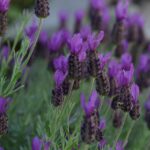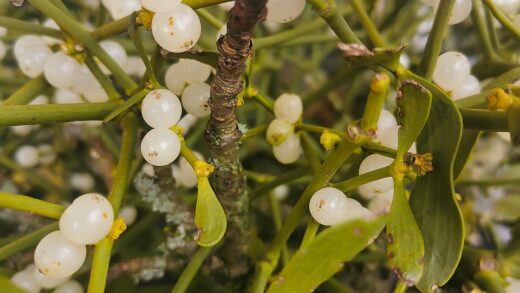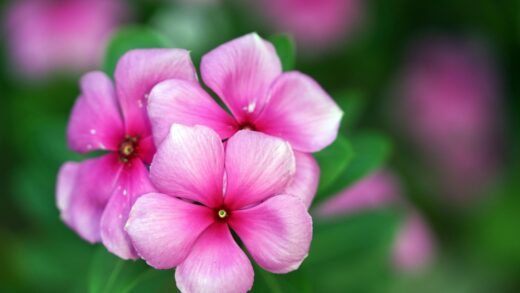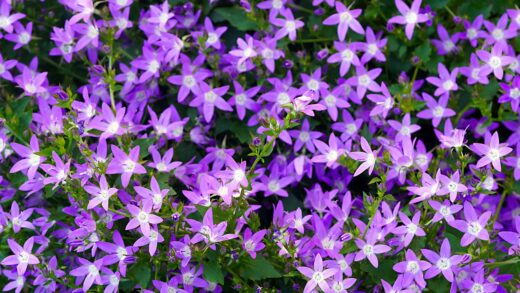Pruning and cutting back the Asiatic dayflower are important maintenance practices that serve several key purposes, including controlling its size and spread, encouraging a bushier and more attractive growth habit, and promoting a longer and more prolific flowering season. Given the plant’s naturally vigorous and creeping nature, regular trimming is often necessary to keep it within its intended boundaries and prevent it from overwhelming neighboring plants in a mixed garden bed. This process is not complicated, as the plant is very tolerant of being cut back and responds quickly with new growth. A strategic approach to pruning allows the gardener to shape the plant and manage its energy, directing it towards the most desirable ornamental outcomes.
The primary reason for pruning this species is to manage its vigorous spread. The stems of the Asiatic dayflower have a strong tendency to creep along the ground, and they will readily root at the leaf nodes wherever they make contact with moist soil. While this trait is useful for creating a dense groundcover, it can also lead to the plant becoming invasive if left unchecked. Regularly trimming the edges of a patch of Asiatic dayflower is essential for maintaining a tidy appearance and keeping the plant contained within its designated area.
Beyond simple containment, pruning can also be used to improve the overall shape and density of the plant. When the growing tip of a stem is removed, the plant is stimulated to produce new growth from the lateral buds located further down the stem. This results in a plant that is much bushier, fuller, and more compact, rather than one with long, sprawling, and potentially sparse stems. This type of pruning, often referred to as “pinching back,” is particularly effective when done early in the growing season on young plants.
Another significant benefit of regular trimming and deadheading is the promotion of continuous flowering. By removing the spent blossoms before they have a chance to develop into seed pods, the plant’s energy is redirected away from seed production and back into creating more flowers. This can significantly extend the blooming period throughout the summer months. This practice, combined with trimming for shape, ensures that the plant remains both aesthetically pleasing and floriferous throughout its entire time in the garden.
Pruning for shape and density
Pruning for shape and density is a technique designed to encourage the Asiatic dayflower to grow into a more compact and bushy form. This is best accomplished by pinching back the stems, a simple process that can be done with your fingertips or a pair of small pruning shears. The goal is to remove the very tip of each main stem, including the terminal bud and the first one or two sets of leaves. This action removes the source of the growth-regulating hormone that suppresses lateral growth, thereby stimulating the buds located at the nodes further down the stem to sprout.
More articles on this topic
The ideal time to begin pinching back the plant is when it is still young and has developed several sets of leaves, typically when it is about ten to fifteen centimeters tall. By starting this process early in the season, you can influence the plant’s fundamental structure, establishing a well-branched framework from the beginning. This initial pinching will encourage the development of two or more new stems from the point just below the cut, effectively doubling the number of growing tips on that branch.
This process can be repeated on the new lateral stems once they have grown a few inches long. A second or even third round of pinching throughout the late spring and early summer will result in an exceptionally dense and mounded plant. While this repeated pinching may slightly delay the onset of the first flowers, the eventual floral display will be much more impressive, with a greater number of flowers blooming on a more attractive and well-structured plant.
Even if the initial pinching is missed, the Asiatic dayflower can be given a more substantial haircut at any point during the growing season if it starts to look leggy or sparse. Cutting the entire plant back by about one-third to one-half will rejuvenate it, stimulating a fresh flush of dense, new growth. The plant is very resilient and will recover quickly from such a hard pruning, typically resuming flowering within a few weeks. This makes it a very forgiving plant for gardeners to practice their pruning skills on.
Controlling spread and invasiveness
The inherent vigor of the Asiatic dayflower means that controlling its spread is a primary concern for many gardeners. The most direct method of control is to regularly prune the edges of the plant’s patch. Using a pair of garden shears or even a lawnmower set on a high setting, you can create a clear boundary around the planting area. Any stems that have started to creep beyond this boundary should be trimmed back. This task may need to be performed every few weeks during the peak of the summer growing season to be effective.
More articles on this topic
Physical barriers can also be an invaluable tool in the management of this plant’s spread. Installing a solid garden edging made of plastic, metal, or stone that is sunk several inches into the soil can help to contain the shallow, rooting stems. While some stems may still manage to creep over the top of the barrier, it will significantly reduce the amount of lateral spread and make the task of edge-trimming much easier and more manageable. This is a particularly good strategy for containing the plant within a designated groundcover area.
Another critical aspect of controlling its spread is to manage its prolific seed production. As an annual, the plant’s primary method of long-term persistence and dispersal is through its seeds. To prevent unwanted seedlings from appearing throughout the garden in the following year, it is important to deadhead the spent flowers regularly. This prevents the formation of seed pods and interrupts the plant’s reproductive cycle. For a large patch, this can be done efficiently by shearing the entire plant back lightly after a major flush of blooms has faded.
If the plant has already become established in an area where it is not wanted, removal will require persistence. Simply pulling the plants is a start, but because the stems can root at the nodes, any small fragments left behind can potentially regrow. It is important to be thorough in removing as much of the plant material as possible. In subsequent weeks, it will be necessary to patrol the area and remove any new seedlings that germinate from the seed bank that is likely present in the soil.
Deadheading to promote flowering
Deadheading is the horticultural practice of removing faded or spent flowers from a plant. For the Asiatic dayflower, this is a highly beneficial task that encourages the plant to produce more blooms over a longer period. The biological purpose of a flower is to produce seeds to ensure the continuation of the species. Once a flower has been pollinated and begins to develop a seed pod, the plant directs a significant amount of its energy towards maturing those seeds. By removing the spent flower, this energy is redirected back into the production of new flowers.
The individual flowers of the Asiatic dayflower are ephemeral, often lasting only for a single day. This means that on a healthy plant, there will be a constant succession of new flowers opening and old ones fading. To deadhead, you can simply pinch or snip off the faded blossoms, including the small developing seed pod at their base. While deadheading individual flowers can be tedious on a large patch, it is very effective.
A more practical approach for a large planting is to give the entire plant a light shearing every couple of weeks. Using hedge shears or hand pruners, you can trim off the top few inches of growth across the entire surface of the plant patch. This process will remove the majority of the spent flowers and developing seed heads in one efficient action. This light pruning also has the added benefit of encouraging a new flush of bushy growth, keeping the plant looking fresh and tidy.
This regular removal of old flowers not only prolongs the blooming season but also contributes to the overall health and appearance of the plant. It prevents the plant from looking messy with dead and decaying flowers and also serves as a method of controlling its spread by preventing self-seeding. For gardeners who want the most impressive and continuous floral display from their Asiatic dayflower, incorporating regular deadheading or light shearing into their maintenance routine is essential.
End-of-season cleanup
As an annual plant in temperate climates, the Asiatic dayflower will complete its life cycle and die back with the first hard frost of autumn. The end-of-season cleanup is the final pruning task and is important for maintaining good garden hygiene. After the frost has killed the top growth, leaving it blackened and wilted, the plant debris should be removed from the garden bed. This cleanup is important for both aesthetic and practical reasons.
Leaving the dead plant matter in place over the winter can create a messy appearance in the garden. More importantly, it can provide a place for pests, such as slugs, to shelter and lay their eggs. It can also harbor fungal spores and other pathogens that could cause disease problems in the garden the following year. By clearing away the debris, you reduce the risk of these problems being carried over from one season to the next.
The cleanup process is straightforward. The dead stems and foliage can be cut back to the ground level using shears or can often be easily pulled or raked away. This plant material can be safely added to a compost pile, where it will break down and be recycled into valuable organic matter that can be used to enrich the garden soil in the future. This act of composting turns a simple cleanup task into a beneficial part of the garden’s nutrient cycle.
If you are relying on self-seeding for the following year’s plants, the end-of-season cleanup can be slightly modified. You can still cut back and remove the bulk of the dead foliage, but be careful not to disturb the soil surface too much, as this is where the seeds are resting. A light raking to remove the debris is usually sufficient. Alternatively, some gardeners prefer to leave the dead foliage in place as a natural mulch to protect the seeds over the winter, clearing it away in the early spring just before the new seedlings are expected to emerge.


















